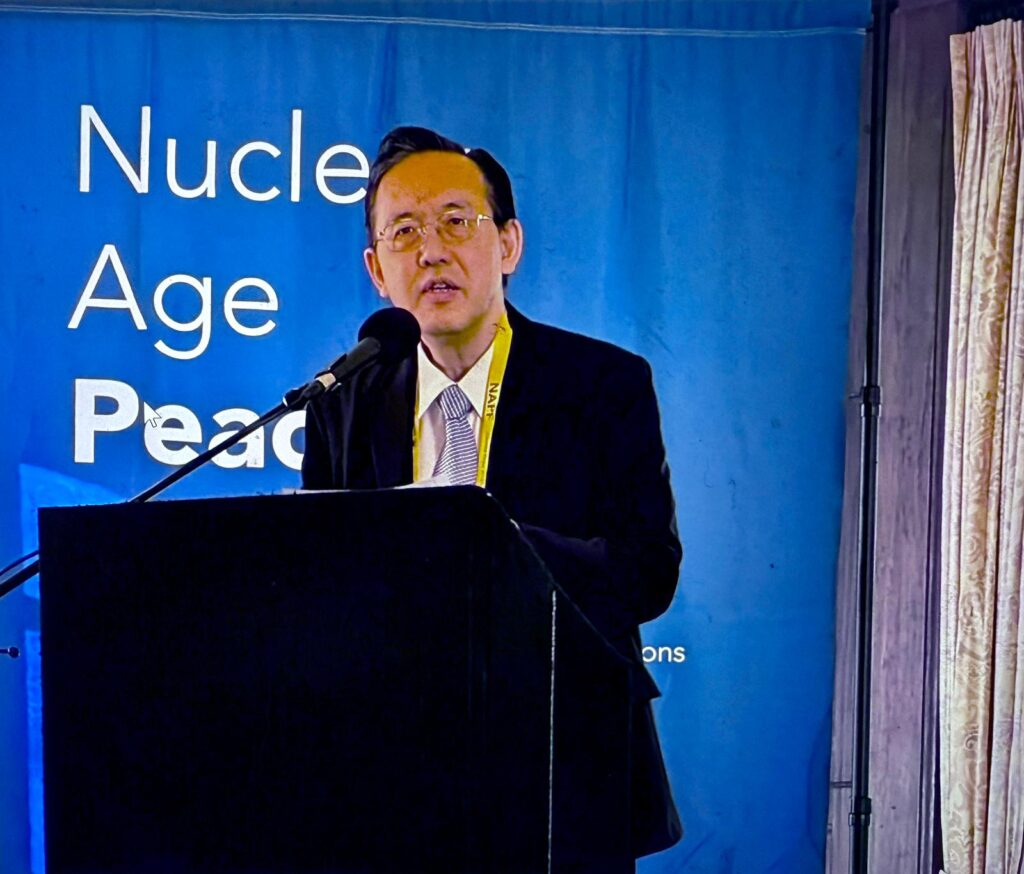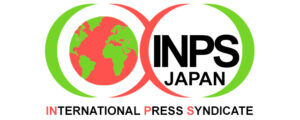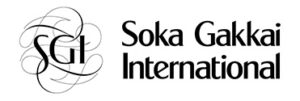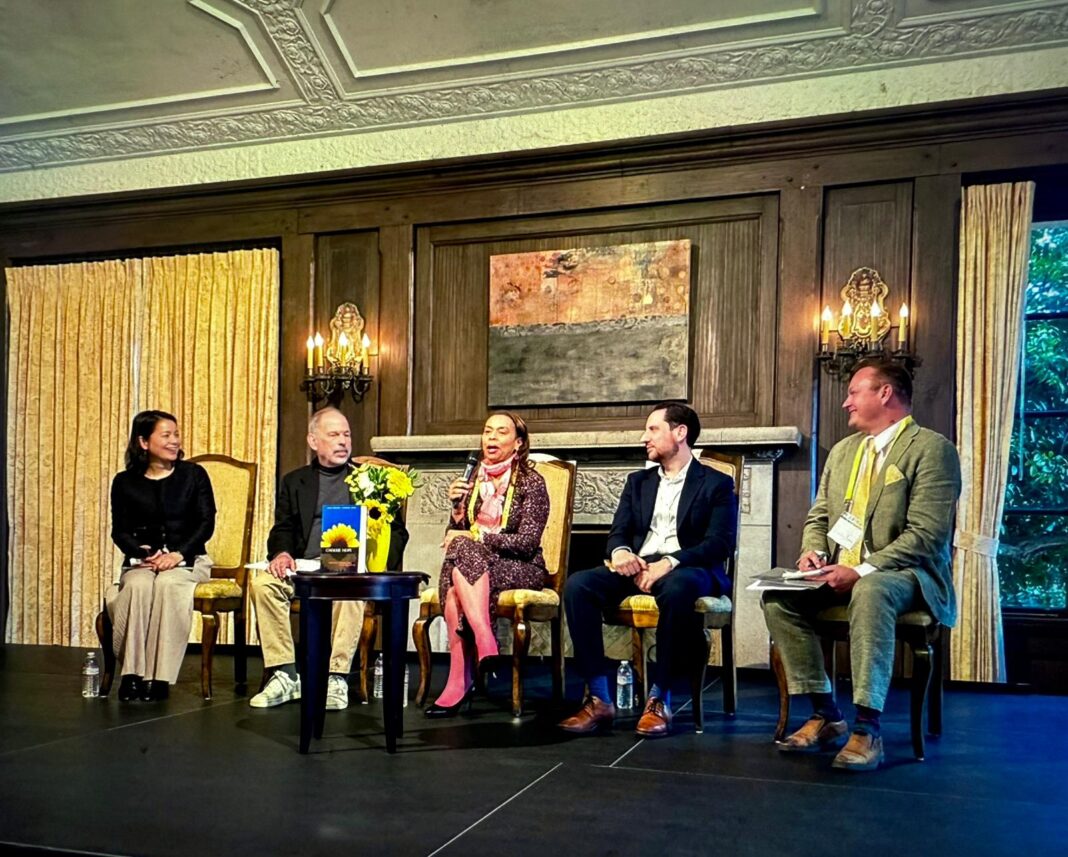By Katsuhiro Asagiri
SANTA BARBARA/Tokyo (INPSJ) — Marking 80 years since the dawn of the nuclear age, peace advocates, diplomats, educators, and atomic bomb survivors from around the world gathered for the “Choose Hope” symposium on March 12–13, 2025, in Santa Barbara, California. Co-organized by the Nuclear Age Peace Foundation (NAPF) and Soka Gakkai International (SGI), the event was held at the Music Academy of the West.

The symposium was inspired by the 2001 dialogue book Choose Hope co-authored by NAPF founder David Krieger and SGI President Daisaku Ikeda, revisiting the ethical and strategic urgency of nuclear abolition. |JAPANESE|NORWEGEAN|KOREAN|
“This is not just about legacy,” said Dr. Ivana Nikolić Hughes, president of NAPF. “We are here to continue the journey they started and to build a world free from the threat of nuclear weapons.”
Tomohiko Aishima, Director of Peace Affairs at SGI, recalled witnessing their dialogue firsthand: “What impressed me most was that their dialogue was not merely about ideals—it was a call to action, rooted in practical solutions.”
A Warning Against Nuclear Deterrence
In the keynote lecture, Pulitzer Prize finalist and author Annie Jacobsen posed the question, “What happens if nuclear deterrence fails?” Drawing from confidential interviews with U.S. government and military insiders, Jacobsen warned: “No matter how it begins, nuclear war will end in total annihilation.” She explained that once a nuclear exchange is triggered, retaliatory strikes could spread globally within just seven minutes, leading to uncontrollable destruction and the collapse of human civilization.
In a following panel, moderated by Dr. Hughes, Princeton University’s Professor Emeritus Richard Falk, Dr. Jimmy Hara of Physicians for Social Responsibility–Los Angeles (PSR-LA), Professor Peter Kuznick of American University, and ICAN Executive Director Melissa Parke addressed policy transformations urgently needed to prevent such a catastrophe.

On the second day, SGI’s Director for Disarmament and Human Rights, Chie Sunada, moderated the session titled “From Deterrence to Disarmament: The Path Forward.” She warned against the increasing role of nuclear weapons in national security doctrines and reported: “At the Third Meeting of States Parties to the TPNW, it was reaffirmed that nuclear deterrence itself is a threat to human survival.”
Ambassador Elayne Whyte, who presided over the 2017 UN negotiations that adopted the Treaty on the Prohibition of Nuclear Weapons (TPNW), emphasized the need for sincere dialogue, even with those who hold opposing views.
Listening to Testimony

Atomic bomb survivor Masako Wada from Nagasaki (representing Nihon Hidankyo) addressed the symposium via video message, urging participants to “continue telling the truth about the horrors of the bomb.”
Mary Dickson, a thyroid cancer survivor and U.S. “downwinder” affected by nuclear testing, declared: “We were deliberately exposed. Justice is needed not only for us, but for victims in the Marshall Islands, Kazakhstan, Polynesia, and everywhere else.”
In the session “Legacy of Nuclear Use and Testing: A Call for Justice,” SGI United Nations Office Disarmament Program Coordinator Anna Ikeda shared testimony on the health effects, stigma, and trauma experienced by victims. “Nuclear justice means establishing the collective understanding that the use, testing, or threat of nuclear weapons can never be justified,” she said.
Dr. Togzhan Kassenova presented findings on the intergenerational health effects stemming from Soviet-era nuclear tests in Semipalatinsk, Kazakhstan. Christian Ciobanu, representing Kiribati and NAPF, proposed establishing an international fund for victim assistance and environmental remediation. Veronique Christory of the International Committee of the Red Cross (ICRC) stressed the importance of humanitarian principles in disarmament efforts.

The Intersection with Climate Justice
The final panel, “The Intersection of Climate and Nuclear Justice: Empowering Youth for Change,” was moderated by SGI Disarmament Program Coordinator Miyuki Horiguchi.
Anduin Devos of NuclearBan.US reflected on how concern over the climate crisis led her to become involved in the anti-nuclear movement. “Resources spent on nuclear weapons should be redirected to address climate solutions,” she said.
Young activists Kevin Chiu and Viktoria Lokh spoke on the importance of integrating youth voices into nuclear policy discussions. Horiguchi cited a Native American proverb—“We do not inherit the earth from our ancestors; we borrow it from our children”—and a quote from Choose Hope: “Hope is another name for youth,” emphasizing the unique power of young people to open new eras.

Art as a Catalyst for Change
Film director Andrew Davis and artist Stella Rose discussed the role of art in inspiring awareness and action. “Art doesn’t just reflect truth—it makes us feel it, and move us to act,” said Davis.
The symposium’s final declaration also underscored the role of culture and creativity in promoting peace and deepening empathy.
The Declaration: Choosing Hope
The Choose Hope Declaration was published after the symposium. With the Doomsday Clock set at “89 seconds to midnight,” the declaration warned that a nuclear-free world is possible only through intentional and collective choices. “We choose hope over despair,” it stated.
This article is brought to you by INPS Japan in collaboration with Soka Gakkai International, in consultative status with UN ECOSOC.
INPS Japan




